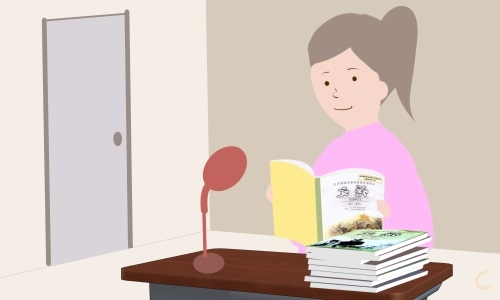編寫教案有助于教師對教學(xué)進行反思和總結(jié),促進教學(xué)質(zhì)量的進一步提高。牛津小學(xué)英語教案萬能模板要怎么寫?接下來給大家?guī)砼=蛐W(xué)英語教案萬能模板,方便大家學(xué)習(xí)。
牛津小學(xué)英語教案萬能模板篇1
教學(xué)內(nèi)容:《牛津小學(xué)英語》6bunit6fplayagameglistenandrepeathsingasong.
教學(xué)目標:
1、了解字母組合ow在單詞中的讀音。
2、能唱歌曲willyoujoinme?
3、熟練掌握本單元所學(xué)內(nèi)容。
教學(xué)重點:熟練掌握本單元所學(xué)內(nèi)容。
教學(xué)難點:了解字母組合ow在單詞中的讀音。
教具準備:錄音機、磁帶、小黑板、骰子、棋子等。
教學(xué)過程:
step1warmup
1.greetings
2.freetalk
就本單元所學(xué)的內(nèi)容進行自由交談,可采用師生間、生生間、小組間等形式進行。
step2revision
1.齊讀ereadandnumber。
2.學(xué)生小組內(nèi)準備朗讀并表演對話。
3.教師抽查,全班評議。
step3presentationandconsolidation
1.playagame
①教師事先布置學(xué)生根據(jù)圖例,了解有關(guān)游戲規(guī)則和方法,準備好游戲工具,包括骰子和棋子。
②指導(dǎo)學(xué)生可在小組內(nèi)開展游戲活動。
③教師抽查學(xué)生開展游戲的情況。
④教師可鼓勵學(xué)生自己自創(chuàng)新的玩法,在游戲中進一步鞏固所學(xué)知識。
2.listenandrepeat
①教師讓學(xué)生自己朗讀單詞,邊讀邊體會字母組合ow在單詞的讀音。
②指導(dǎo)學(xué)生聽錄音跟讀單詞和句子,教師可利用圖片或多媒體課件幫助學(xué)生理解句意。
③教師可指導(dǎo)學(xué)生朗讀,也可在學(xué)生中開展朗讀比賽。
④學(xué)生自己歸納整理其他例詞,編寫或其他句子并練習(xí)朗讀。
⑤匯報結(jié)果,教師相機板書。
snowmen
snowball
rowrowing
showknow
snow
blowlow
snowy
snowman
lowerslow
slower
3.singasong
①講解歌詞大意。
②讀歌詞。
③聽錄音。
④聽錄音跟唱。
step4homework
1、全面復(fù)習(xí)本單元所學(xué)內(nèi)容。
2、背誦glistenandrepeat并試著歸納其它例詞。
3、預(yù)習(xí)《補充習(xí)題》unit6。
板書內(nèi)容
snowball
snowmen
snowman
snowy
snow
rowrowingshow
blowknowlow
lowerslowslower
板書設(shè)計:
牛津小學(xué)英語教案萬能模板篇2
教學(xué)內(nèi)容:《牛津小學(xué)英語》6bunit3askingthewayblook,readandlearn,dreadandtalk。
教學(xué)目標:
1.進一步鞏固四會單詞:stop,turnleft/right,postoffice,geton,getoff,along,street,way。
2.熟練運用四會句型:canyoutellmethewayto…please?掌握句型:howcanigetto…及其答語。
教學(xué)重點:
1.進一步掌握四會單詞和句型,并能熟練運用。
2.能夠聽懂d部分的會話,并能靈活運用相關(guān)句型進行情景對話。
教學(xué)難點:利用d部分的對話,指導(dǎo)學(xué)生在具體情景中運用恰當?shù)恼Z言進行交流,培養(yǎng)學(xué)生活學(xué)活用的能力。
教具準備:本課的掛圖、單詞卡片、磁帶、錄音機、一張城市交通圖。
教學(xué)過程:
step1warmup
1.greetings.
2.freetalk
①教師自制交通圖,把表示場所類的圖片隨機貼到不同的地方與學(xué)生交流。
t:lookatthemap,boysandgirls.here’sacinema.what’snearthecinema?
s:there’sashoppingcentre/middleschool/history/postoffice/primaryschool/trainstation.
②復(fù)習(xí)詞匯:教師快速從地圖上拿走幾張場所類圖片,讓學(xué)生回答:what’smissing?猜出拿走的卡片,并把要求四會掌握的單詞拼出來。
③教師拿出一面小紅旗貼到地圖上,表示自己的位置,說look,i’mhere.canyoutellmethewayto…,please?引導(dǎo)學(xué)生運用句型goalong…turnleft/right…來回答,進一步鞏固c部分的對話內(nèi)容。
3.chant:where’sthebookshop?
ste_resentationandpractice
1.出示一張本城的交通圖和學(xué)生交流引出howcanigettothe…?
t:tomorrowismymother’sbirthday.iwanttobuysomepresentsforher.whocantellme,howcanigettotheshoppingcentre?(板書)
2.根據(jù)地圖和圖片,幫助學(xué)生試著看圖填空完成答語。
s:it’sonhuazhongroad.
it’saboutakilometreaway.
youcantakebusno.4andgetoffatthesecondstop.
3.再次讓學(xué)生看圖回答。
4.小組內(nèi)操練對話。
5.出示d部分掛圖,指導(dǎo)學(xué)生看圖,整體閱讀對話,了解大意。
6.在學(xué)生理解的基礎(chǔ)上指導(dǎo)學(xué)生讀句子。
7.小組內(nèi)表演對話,并利用28頁上的圖自編對話。
8.找?guī)捉M學(xué)生表演對話。
step3consolidation.
1.listentothesong:excuseme
在欣賞中鞏固有關(guān)句型。
2.placeandsay.
教師在黑板上畫一些簡單的線路,隨機把一些表示場所類的圖片貼到不同的地方,讓學(xué)生利用學(xué)過的句型進行有關(guān)問路對話。(howcanigettothe…?)
3.看圖編一段問路的對話,并寫下來。(可以讓同位先交流討論,再書寫。)
4.lookandwrite.
例:holsocschool
①iaostnt②yrotsih③ertcne
④gtrhi⑤eettrs⑥ngloa
step4homework
1.抄寫本課四會單詞,每個3遍,并會聽寫。
2.畫一張從家到學(xué)校的路線圖,向別人介紹如何找自己的家。
3.預(yù)習(xí)a部分。
板書內(nèi)容:unit3askingtheway
1.單詞卡、地圖。
2.句型:canyoutellmethewayto…,please?
howcanigettotheshoppingcentre?
it’son_________road.
it’sabout_________kilometreaway.
youcantakebus_________andgetoffatthe_______stop.
板書設(shè)計:
牛津小學(xué)英語教案萬能模板篇3
教學(xué)內(nèi)容:d.listenandwritee.read,thinkandwrite
f.thinkandwrite
教學(xué)目標:
1、能聽懂,會說和會讀單詞finish。
2、向?qū)W生介紹英文書信的書寫方法,滲透跨文化交際的意識和能力。
3、大體了解e-mail與書信的不同之處。
教學(xué)重難點:
1、培養(yǎng)學(xué)生良好的聽力習(xí)慣,提高聽力水平。
2、搞清中西方書信的不同寫法。
教具準備:磁帶、掛圖、小黑板
教學(xué)過程:
step1warmup
1、greeting
2、listenarhyme:iwanttowritealetter.
3、dutyreport
請幾位學(xué)生上臺進行自我介紹。
4.revision
①默寫單詞:also,apenfriend,glue,writealetter.
②開火車朗讀對話。③男、女生分角色背誦對話。
④小組合作表演對話。
ste_resentation
1.listenandwrite
本部分為一段有關(guān)helen在筆友俱樂部征集筆友的對話,要求學(xué)生通過聽錄音完成填表練習(xí)。
①在學(xué)生聽錄音前,教師可先引導(dǎo)他們看練習(xí)的引言部分,簡單介紹對話背景,讓他們了解對話主題(atthepenfriendclub),預(yù)測可能聽到的內(nèi)容,做好心理準備。
②教師可播放全文錄音,鼓勵學(xué)生逐步養(yǎng)成整體接受語言材料的習(xí)慣。
③根據(jù)表格內(nèi)容師生、生生間采用一問一答形式進行操練。
④指導(dǎo)學(xué)生完成填表練習(xí)。
⑤教師與學(xué)生共同討論練習(xí)答案,并分析錯誤原因,找到解決方法。
2.read,thinkandwrite.
本部分展示了liutao寫給peter的信,要求學(xué)生在閱讀來信的基礎(chǔ)上幫助peter給liutao回信,重點訓(xùn)練了學(xué)生的閱讀理解能力和寫作能力。
①教師先引導(dǎo)學(xué)生自己閱讀本課的語言材料,理解句子含義。讀時本部分出現(xiàn)的生詞,教師可采取不同的處理方法:可在閱讀前講解,也可啟發(fā)學(xué)生通過上下文猜測。如單詞finish就可以聯(lián)系上下文猜測。
②引導(dǎo)學(xué)生分組討論liutao的來信和peter的回信,通過問答,如詢問“howoldisliutao?”、“wheredoeshelive?”、“doeshehaveanybrothersorsisters?”等問題讓學(xué)生理解信中內(nèi)容。
③讓學(xué)生仔細觀察并自己總結(jié)信件的格式、寫法,包括地址,日期,起首語,結(jié)尾問候語的處理方法,注意提醒學(xué)生英文書信中的地址書寫要從小到大。
3.thinkandwrite
本部分是peter給liutao的回信,介紹除書信以外的另一種通訊方法e-mail,或稱電子郵件。
①通過問答如who’speter?wheredoeshelive?等讓學(xué)生回憶起a部分的一些資料。
②讓學(xué)生仔細閱讀f部分有關(guān)peter的資料,讓學(xué)生加深對peter的了解。
③教師介紹書信以外的一種通訊方法-e-mail。可詢問學(xué)生是否有用電子郵件的習(xí)慣,鼓勵學(xué)生說出新通訊方式的好處與壞處。
④讓學(xué)生觀察書中e-mail的格式,引導(dǎo)他們說出與書信的不同之處。
⑤請學(xué)生兩人一組完成填空練習(xí)。
⑥集體訂正。⑦集體朗讀一遍,分組朗讀一遍。
step3homework
1、朗讀e、f部分各一遍。
2、熟練背誦a部分對話,并自創(chuàng)對話。
3、模仿e部分,用英語給同學(xué)或老師寫一封信。
板書內(nèi)容:
1、課題:unit7alettertoapenfriend2、單詞:finish
板書設(shè)計:
牛津小學(xué)英語教案萬能模板篇4
unit1第一教時
教學(xué)目標:
1,能正確理解、掌握對話內(nèi)容,并能朗讀,初步表演對話。
2,能正確地聽、說、讀、寫day,all.any,areadingroom.sure.floor.
3,能正確的聽、說、讀詞匯first,aterm,back.eachother.glad.abuilding,asportshall.tabletennis,second.
4,正確的聽、說、讀、寫句型istherea…?yes,thereis./no,thereisn't.arethereany…?yes,thereare?/no,therearent't.howmany…arethere?thereare…
5,能正確地運用對話中的日常交際用語和三會句型itisthefirstdayof…theyarehappytoeachothere.gladtoseeyou.i'mnotsure.it's/they'reonthe…floor.
教學(xué)重點:
能正確理解、掌握對話內(nèi)容。并能朗讀、初步表演對話。
教學(xué)難點:1,能比較流暢的朗讀對話,并能在掌握對話內(nèi)容的基礎(chǔ)上進一步表演對話。
2,能正確的聽、說、讀、寫therebe…句型的一般疑問句形式及其肯定和否定回答。
課前準備:課件、掛圖、錄音機。
教學(xué)過程:
一、:revision:
1,t:goodmorning,boysandgirls.s:
t:nicetoseeyou.s:
t:howareyou?
t:mynameis…what'syourname?
2,practiseinpairs:老師小結(jié)ok.isee.you'rehappytoseeeachother.(板書。領(lǐng)讀,齊讀)
二、presentation:
(一)1,t:thistermi'llbeyourenglishteacher.i'mveryhappy.todayallthestudentsarebackatschool.gladtoseeyou.welcomebacktoschool.
卡片:allgladback板書:allthestudentsarebackatschool.gladtoseeyou.領(lǐng)讀齊讀
2,t:todayisthefirstofseptember.(板書:1september)it'sthefirstdayofthenewterm.thisismyfirstclasstoteachyou.
卡片:dayfirst板書:itisthefirstdayofthenewterm.領(lǐng)讀,齊讀
(二)1,出示課件:出示一幢大樓的圖片,引出abuilding,asportshall,areadingroom.atabletennisroom
2,復(fù)習(xí)therebe…的陳述句形式和介紹句型istherea…?arethereany…?及其肯定和否定回答。
a.singasong:intheclassroom.
b.觀看課件:給學(xué)生布置任務(wù):用thereis/thereare的句型介紹所看到的內(nèi)容,將班級分成四大組,比一比哪一組說的最多最好。將學(xué)生說到的內(nèi)容板書:
alibraryamusicroomacomputerroomatvroomofficesaplaygroundclassroomsaniticeboardblackboardsdeskschairsbookcasepicturestaperecordersasportshallareadingroomatabletennisroom.
c.在比賽進行到一半時,教師可采用自問自答的方式引出新句型istherea…?arethereany…?及其肯定和否定回答。如:isthereatvinthebuilding然后自己回答:yes,thereis.或no,thereisn't.學(xué)生跟說,操練。板書:istherea…..inthebuilding?yes,thereis.no.thereisn't.
d.用單詞toilets同法教授aretherany…?yes,thereare.no.therearen't.板書
e.用教室里的實物進行操練。
3.介紹短語onthe…floorfirstsecondthirdfourthfifth
出示掛圖:
a.教師指著1/f標志介紹:thetabletennisroomisonthefirstfloor.what'sonthefirstfloor,too?
s:thereisamusicroomonthefirstfloor.卡片:flooronthefirstfloor.
b.t:arethereanycomputerroomsonthefirstfloor?學(xué)生看圖回答:s:no,therearen't.
t:thecomputerroomsareonthesecondfloor.板書:secondonthesecondfloor
c:同法介紹:thirdfourthfifth
4,介紹句型howmany…arethere?
a.繼續(xù)看掛圖:t:howmanyreadingroomsarethereinthebuilding?并自己回答therearetwo.oneisonthefirstfloor.theotherisonthethirdfloor.
b.根據(jù)實際情況對句型進行操練
c.快速記憶游戲,看一分鐘。學(xué)生搶答:thereisamusicroomonthefirstfloor.
5,聽錄音,跟讀。分角色朗讀,表演,評價。
三、consolidation:
讓學(xué)生安排各類教室和活動室所在的樓層,以四人小組為單位,設(shè)計校園平面圖,請二至三組同學(xué)上臺表演。全班評出最合理的校園圖。
四、assignhomework
1,聽錄音,朗讀并表演對話。
抄寫四會掌握的單詞和句子。
2.完成練習(xí)冊。
教后感:校園是學(xué)生最熟悉的環(huán)境,本課所學(xué)正是大家熟悉的地點,通過設(shè)計校園圖充分發(fā)揮學(xué)生的聰明才智和積極性,讓學(xué)生在活動中學(xué)習(xí),練習(xí),鞏固,效果明顯。
第二教時
教學(xué)目標:
1,進一步掌握句型is/arethere…?thereis/are…h(huán)owmany…arethere?及其回答。
2,能正確的聽、說、讀、寫詞匯agarden,areadingroom,floor.
3,能正確的聽,說、讀詞匯atoilet,atabletennisroom,asportshall.aswing,aslide,asee-saw.
教學(xué)重點:
1,能正確地聽、讀、寫句子isthere…?及其回答yes,thereis.no.thereisn't及其復(fù)數(shù)形式。
教學(xué)難點:
能正確理解英語中"樓層"的表達方法。
教具準備:
1,圖片:atoiletagardenatabletennisroomasportshallareadingroomaswingaslideasee-saw
2,錄音機,磁帶
教學(xué)準備:
a,讓學(xué)生對專用教室進行調(diào)查研究,上課前自帶圖畫紙和水彩筆。
b,板書準備:unit1thefirstdayatschool
教學(xué)過程:
一:revision:
1,t:itisthesecond/thirddayofthenewterm,boysandgirls.howareyou?
2,t:isthereanoticeboardinourclassroom?arethereanycomputersinourclassroom.isthereabookcase?howmany…arethere?
3,用is/arethere…inourschool?howmany..arethere?whereisit?arethey?對學(xué)生所做的本校-專用教室的調(diào)查結(jié)果進行檢查,完成下表。
roomsclassroomreadingroommusicroomcomputerroomsportshalltabletennisroom
howmany?
floor
在問答過程中,注意師生問與答的角色轉(zhuǎn)換,最終落實到學(xué)生之間的問與答。同時通過幻燈片鞏固三會詞匯。atoiletatebletennisroomasportsroomareadingroom.
二、presentation:
1,復(fù)習(xí)與介紹生詞
a,出示一幅樓層示意圖,把atabletennisroomasportshallareadingroom的圖片逐一貼上黑板,在圖下寫適當單詞,復(fù)習(xí)這三個單詞。
b,出示一個游樂場的圖,介紹生詞aswingaslideatoilet(只指男廁所或女廁所)asee-sawagarden(卡片)
c.跟讀單詞,齊讀,開火車讀
二、singasong
讓學(xué)生靜聽歌曲twojackets,然后讓他們跟唱,教師適時板書歌詞中出現(xiàn)的第一單元四會要求的句型結(jié)構(gòu)。利用歌曲twojackets的曲調(diào),配以課前準備的幻燈片,逐一替換歌詞,鞏固本教時的詞匯教學(xué)。如:howmanytoiletsarethere?therearefourtoiletsintheschool.arethereanytoiletsonthefirstfloor?no,therearen'tanyonthefirstfloor.
三、consolidation:
1,分組競賽:
學(xué)生看、聽教師課前作好的課件。小組比賽,用isthere/arethere…?there's/therseare…h(huán)owmany…arethere?進行小組競賽,比一比哪一組能說出最多對話。教師在競賽后表揚積極參與的學(xué)生。
2,練習(xí)冊聽力
四、assignhomework
1,抄寫本單元所學(xué)的詞匯。
2,創(chuàng)設(shè)情景,用本單元主要句子,自編小對話。
教后感:新課程改革強調(diào)學(xué)生通用英語做事情,在做事情的過程中發(fā)展語言能力、思維能力以及交流與合作的能力。本課通過真實的豐富多彩的活動,使學(xué)生就能接觸到更貼近學(xué)習(xí)實際、貼近生活、貼近時代的信息資源;學(xué)生的參與意識隨之不斷增強。
第三教時
教學(xué)目標:
1,復(fù)習(xí)本單元所學(xué)的詞匯。
2,進一步掌握句型istherea…inthe…?yes,thereis./no.thereisn't及其復(fù)數(shù)形式。
3,進一步掌握句型howmany…arethere..?及其回答。
4,能初步了解字母組合a在單詞中的讀音。
教學(xué)重點:
1,能正確的聽、說、讀寫句子:istherea…inthe…?yes,thereis./no,thereisn't.及其復(fù)數(shù)形式。
2,能正確的聽、說、讀、寫句子howmany…arethere..?及其回答。
教學(xué)難點:
能正確的運用istherea…inthe…?yes,thereis./no.thereisn't.及其復(fù)數(shù)形式和句子howmany…arethere…?及其回答,并能在具體情景中以口、筆頭形式進行交流。
課前準備:
教具準備:
a,一個樓層示意圖,上面寫有學(xué)校的所有專用教室名稱。
b,cdg的掛圖
c,一幅公園圖
d,板書準備:unit1thefirstdayatschool
教學(xué)過程:
a.singasong
學(xué)生跟著錄音機唱twojackets,然后讓學(xué)生改歌詞,再唱這首歌曲,旨在復(fù)習(xí)鞏固第一、二教時的句型。
b.presentation:
1,出示課前準備好的樓層示意圖,與學(xué)生討論圖上各設(shè)施的名稱。1
t:let'slookandsay.
ss:ok
t:what'sonthefirstfloor?
ss"there'sareadingroomandamusicroom.
2,引導(dǎo)學(xué)生根據(jù)本校上午設(shè)施用上面的句型適當擴充進行一段對話,使學(xué)生能靈活運用所學(xué)語言。
c.askandanswer.
1,教師指著樓層示意圖,用is/arethere…?提問圖內(nèi)設(shè)施。
t:isthereatabletennisroomintheschool?
s:yes,thereis.
t:arethereanytouletsintheschool?
s:yes,thereare.
2,教師提問幾位學(xué)生之后,讓學(xué)生進行同桌問答。
3,教師出示caskandanswer
t:isthereatabletennisintheschool?
s:yes,thereis.
4.practiseinpairs
5,教師提供其他情景讓學(xué)生繼續(xù)操練。
d.workinpairs:
1,教師出示d,老師和學(xué)生對話。
2,學(xué)生根據(jù)圖意自編對話。
3,magiceyes:
a,游戲目的:進一步掌握句子howmanyarethere…?
b教師將課前準備的公園圖出示一分鐘,讓學(xué)生盡可能多的將圖上每種物體的數(shù)量記住,然后回答。如教師問howmanyslidesarethereinthegarden?學(xué)生搶答therearetwo.對答者給予獎勵。
e;listenandrepeat
1,教師出示本部分掛圖,請學(xué)生說出圖里有什么東西。
t:pleaselookatthispicture.whatcanyouseeinthepicture?
s:icanseesomecakes.
t:canyouspelltheword'cake'?
s:yes,ican.c-a-k-e.
3學(xué)生聽錄音后跟說四個單詞及句子。在說的過程中讓學(xué)生體會元音字母a在重讀音節(jié)中發(fā)。。。
4,學(xué)生擴充更好的體會:bookcaseplanecrayontapestaplerradioskatingname
e.assignhomework
1,默寫本單元所學(xué)的單詞和句子。
2.創(chuàng)設(shè)情景,用istherea…inthe..?yes,thereis./no,thereisn't.和howmany…arethere?
教后感:語言學(xué)習(xí)要通過創(chuàng)設(shè)良好的語言環(huán)境和提供大量的語言實踐機會,使學(xué)生通過自己的體驗、感知、實踐、參與和交流形成語感;在課上我采用多種方式讓學(xué)生快速,大容量的進行練習(xí)。
第四教時
教學(xué)目標
1,通過復(fù)習(xí),能熟練的掌握本單元所學(xué)的場所和有關(guān)游樂場中設(shè)施單詞。
2,能較熟練的在情景中本單元所學(xué)的句型和日常交際用語。
教學(xué)重點:
1,熟練的掌握場所類和有關(guān)游樂場中的設(shè)施單詞。
2,能綜合運用本單元所學(xué)過的單詞、句型和日常交際用語。
3,能初步改編或擴充本單元所學(xué)的對話。
課前準備:
1,學(xué)生自帶一張自己房子的圖片,
2,幾張已學(xué)過的表示地點的圖
3,錄音機和磁帶
板書準備:unit1thefirstdayatschool
教學(xué)過程:
a:freetalk
1,請學(xué)生表演readandsay部分的對話。
3,出示課前準備的地點圖片,與學(xué)生進行對話,談?wù)撎鞖夂腿ビ瓮娴挠媱潱纾篿t'sasunnyday,shallwegoandplay?引導(dǎo)學(xué)生用goodidea或yesok等回答。教師在與學(xué)生的對話中有意引進了shallwego…和goodidea這兩個句子,為readandact課文里shallwegoandplaythere的引出打下基礎(chǔ)。
b.readandact
1,出示ahouse的圖片說thisismyhouse.學(xué)生跟讀house
2,教師問學(xué)生:what'snearmyhouse,guess.引導(dǎo)學(xué)生用there'saparknearyourhouse來猜測。在學(xué)生猜的時候在問學(xué)生:what'sinthepark?并鼓勵他們用歌曲twojackets中的arethereanyjacketsonthebed?的音調(diào)來邊唱邊猜,這樣可提高學(xué)生的學(xué)習(xí)興趣。如果學(xué)生一時猜不出來,教師可用簡單的英語做一些提示。在學(xué)生猜出來以后教師一方面給予獎勵,一方面把有關(guān)的圖片貼在黑板上。
如slideswingtrees
3,教師在這時可提問anythingelse?what'snearthetrees?教師做出聞花香的動作,引出aflower學(xué)生跟讀,教師指著教室里的花說:therearealotofflowers.學(xué)生跟讀。在指著話花和樹說:therearealotofflowersandtrees.最后教師指著黑板上的圖問:what'snearmyhouse?doyouknow?學(xué)生很快就能用isthereaparknearyourhouse?來猜出答案。t:shallwegoandplaythere?s:goodidea/yes.no.
4.聽錄音、學(xué)生看書跟讀。
4,practiseinpairs:what'snearyourhouse?(拿出圖片)
c.lookfindandsay
1,教師出示一些圖片,一秒鐘后消失。t:howmqanycarsarethereinthestreets?s:thereare…
2.同學(xué)互問互答。
d.consolidation:
教師和學(xué)生共同在黑板上畫一幅游樂場所的圖,四人小組活動,比賽:
a:gladtoseeyou.b.
b:gladtoseeyou,a
a:isthereaparknearyourhouse?
b:yes,thereis.it'ssmall.buttherearealotofflowersandtrees.
a:arethereanyslidesinit?
b:yes,thereare.
a:howmanyslidesinit?
b:therearetwo.
a:shallwegoandplaythere?
b:goodidea.
e:assignhomework
1.抄寫本單元所學(xué)的單詞和句子,并能默寫。
2.背誦并表演readandact.
3.學(xué)生自編對話。
教后感:外語教學(xué)的特點之一是實踐性強。重視學(xué)生的參與強調(diào)向?qū)W生提交一定數(shù)量和質(zhì)量的練習(xí)與活動,以保證學(xué)生在單位時間內(nèi)有足夠的機會接觸目的語。語言是"練"會的而不是"學(xué)"會的,在教學(xué)的各個環(huán)節(jié)中,應(yīng)精心設(shè)計,給學(xué)生提供大量的英語練習(xí)機會。
牛津小學(xué)英語教案萬能模板篇5
unit3atamusicroom第1課時總第10課時
教學(xué)目標:
1.能聽說讀寫單詞sing,dance,make,play,can,ride,put;
2.能運用以上詞匯,并能聽懂會說,會讀,會寫句子:ican…..,whatcanyoudo?
教學(xué)重難點:
1.能四會掌握單詞sing,dance,make,play,can,ride,put
2.能聽懂會說,會讀,會寫句子:ican…..,whatcanyoudo?及其回答。
教學(xué)準備:
錄音機,單詞圖片,句型卡片,飛機模型,話筒,面粉,雞蛋,蛋糕,調(diào)查表
教學(xué)過程:
a:preparation
1.listentoasong:wecansinganddance.
2.greetings
3.復(fù)習(xí)動作類單詞:swing,singing,dancing,skating,sking等
方法:老師做動作,學(xué)生說。
句型運用:t:ilikeswimming,andyou?
s:ilikeswimming,too./ilikedancing./idon'tlikeswimming.
b:presentation
1.學(xué)習(xí)單詞
(1)在復(fù)習(xí)過程中相機出示卡片sing,dance等,拼寫。
t:icandance.whatcanyoudo?
s:icansing,……..
(2)"swim","ski"and"skate"
句型:t:icanswim.whatcanyoudo?
s:icanski/skate.(師生,生生,四人小組)
(3)"playtheguiter","playthepiano"and"playtheviolin"
先猜動作,師邊做動作邊說:icanplaytheguiter并出示詞組
whatcanyoudo?(師生,同桌)口拼單詞play
(4)"makeamodelplane","makeapuppet"
在上述會話中引出:師取出制作模型的零件,邊拼邊說:t:icanmakeamodelplane.同樣邊拼裝木偶邊說icanmakeapuppet.讀:make/makeapuppet/makeamodelplane.師另取白紙一張折著說icanmakeabasket.whatcanyoudo?師再取雞蛋和面粉icanmakeacake.等。
2.鞏固句型
(1)出示句型:ican…..,whatcanyoudo?ican…
請兩生表演啞劇,其余兩生配音
(2)請5人上臺連鎖問答,然后四人小組練習(xí)。
(3)看圖說話
(4)doasurvey.whatcanyoudo?
sallylilyjack
sing
dance
匯報:whatdoyouknowfromthesurvey?
3.lookandread
(1)listenandact:rideabike./putyourbookonyourhead/run/jump/putyourpencilboxonyourhead.
(2)icanrideabike.canyourideabike?
(3)看書自讀,聽音,跟讀
(4)分角色讀,表演。
c:consolidation
d:exercise
copythewordsandsentences.
教后感:小學(xué)英語課帶學(xué)生進入一個全新的語言世界。內(nèi)容豐富而新奇,可真的要讓學(xué)生去掌握和運用,難免會陷入反復(fù)操練的單一情況。讓學(xué)生合作學(xué)習(xí),可使學(xué)生對語言的操練有情景,帶任務(wù)。各種游戲和比賽也可很好的開展,在教師的正確引導(dǎo)下,還可培養(yǎng)學(xué)生合作、團結(jié)、進取的良好情操。
unit3atamusicroom第2課時總第11課時
教學(xué)目標:
1、能聽得懂,會說和會讀日常交際用語和句型listento…,please.now,followme,please.let'ssingittogether.
2、聽說讀寫詞匯listen,learn,lesson,song.
3、會唱歌曲wecansinganddance.
4、聽懂、會說、會讀、會寫句型canyou…?yes,i/wecan.no,i/wecan't.
教學(xué)重難點:
能綜合運用句型當小老師音樂課
教學(xué)準備:
錄音機、電子琴、句子卡片
教學(xué)過程:
a:preparation
1.listentoasong.
2.greetings.
3.freetalk:icandance,whatcanyoudo?師生、生生、四人小組
4.口拼單詞:sing/dance/make/play/ride/put
5.canyousing?yes,ican./no,ican't.
如果說能唱的話就請他唱一首或跳一曲
t:hello,boysandgirls.canyousingthesong:perhaps
s:yea,wecan./no,wecan't.口拼we
b:presentation
t:i'myourenglishteacher.butinthisclass,iwanttobeyourmusicteacher.let'sgotothemusicroomandhaveamusiclesson.
1.唱thisistheway來到musicroom.
學(xué)習(xí)leson/anenglishlesson/acomputerlesson/anartlesson
t:shallwesingthesong"intheclassroom"now."
s:yes.師伴奏齊唱
2.學(xué)習(xí)相關(guān)用語出示相關(guān)卡片
(1)t:shallwelearnthesongwecansinganddance
s:yes.(點頭)
學(xué)learnthesonglearntosay請學(xué)生當老師說
(2)師指錄音機示意listentothesong,please.
ok出示句子、讀(聽一遍歌曲)
(3)師領(lǐng)唱說followme,please.學(xué)說followme.
(4)canyousingit,now?yes,wecan./no,wecan't.
(5)let'ssingittogether,齊唱
3、聽音、模仿、分角色讀、自讀
請優(yōu)等生當老師
四人小組演二人小組表演
c:playagame
請幾位同學(xué)做"followme"游戲
t:putyourbookonyourhead./putyourpencilonyourfoot.canyoudoitnow?
t:let'scount:12345678
失敗者:no,wecan't./yea,wecan.
t:shallwedoittogether?
d:assignwork
copythewordsandsentences.
教后感:這是一堂音樂課,只有讓學(xué)生身臨其境,體驗運用語言的實際氣氛,讓學(xué)生自覺的理解語言和運用語言,從而輕松掌握語言。
unit3第3課時總第12課時
教學(xué)目標:
1、能聽懂、會說、會讀日常交際用語:
2、初步掌握情態(tài)動詞的用法;
3、了解元音字母在單詞中的讀音;
4、能模仿音樂老師用相關(guān)用語組織活動。
教學(xué)重難點:
能用相關(guān)表達當小老師。
教學(xué)準備:
圖片、歌曲磁帶、樂器(會的同學(xué)帶)、請一位學(xué)生準備
教學(xué)過程:
a:freetalkandleadin
1.canyousingthesongwecansingaddance?thensingtogether.
2.canyou….?yes,ican./no,ican't.
ican….whatcanyoudo?
3、請學(xué)生當音樂老師上課
b:presentation
t:we'reinthemusicroom.we'rehavingamusiclesson.whataredoing?whereareyounow?
1.greetings.
用音樂課的方式問候boysandgirls,canyousingthesong"tenlittleindiaboys"?
s:no,wecan't/no,ican't..(sands)
2.whatcanyousing?
s1:icansing"hotcrossbuns"s2:icansing"intheclassroom".
t:howmanystudentscansingthesongintheclassroom?
師站到他們一邊幫助說:wecansing"intheclassroom"wecan'tsing"intheclassroom"又來到不會的一邊幫助說theycansing"intheclassroom"theycan'tsing"intheclassroom"
3.ok,let'ssing"hotcrossbuns"first.
理解后學(xué)說生(準備好的)sorry,ican'tsing.
practise:let'ssing"hotcrossbuns"first.
sorry,ican'tsing
4.whatcanyoudo?icanplaythepiano.
ok,let'sstart.(startmeansbegin)
5、出示掛圖:
(1)聽背景介紹:what'aretheydoing?/wherearethey?/what'sthetime,now?
(2)t:canthestudentssingthesong"wecansinganddance"?
(3)聽音,整體感知第一段;
(4)再聽回答問題whatcanthestudentssing?/whatcanbendo?;
(5)跟老師讀(加上動作)/師生分角色說/同桌分角色說practiseinfour;
(6)請一生介紹背景,一生當老師表演,鼓勵替換歌曲并加上下半部分內(nèi)容。
c:havearest.
d:listenandrepeat
1.看圖認讀
2.listenandrepeat.
3.告訴大家字母a在fns前一般讀/:/
4.讀下列單詞tape/table/plane/cake/cat/bag/back
e:assignhomework
readthedialogue.
教后感:帶著大家上了一節(jié)音樂課,可以讓學(xué)生自己嘗試當音樂老師,加深體驗,從而達到掌握本課對話的目的。
unit3第4課時總第13課時
教學(xué)目標:
1綜合適用已學(xué)交際用語自編對話,使四會句型得到強化;
2能適用theboycan…,butthegirlcan't…的句子結(jié)構(gòu)描述具體情況.
3復(fù)習(xí)where's…?he's/she's/it'sin/on…的句型
教學(xué)難點:
1在情景中鞏固acan,buebcan't的語句.
2能運用相關(guān)句型創(chuàng)編對話
教學(xué)準備:
大盒子(能躲藏人),傘,大布,小汽車,小貓等,課前準備英語課上學(xué)習(xí)rhyme的會話.
教學(xué)過程:
a:review
1.greetings.
t:it'soneo'clockintheafternoon.we'reintheclassroom.we'rehavinganenglishlesson.
口拼lesson
2師示范學(xué)rhyme的會話
t:hello,boysandgirls.canyousaytherhyme"halloween"
s:no,wecan't
t:whatcanyousay?
s:icansay….
t:let'ssay"alittlebook"first.
t:let'sstart
b:look,readandcomplete
1.t:whatcanyoudo?s;icansing.請另一位同學(xué)說:hecansing.
同上小組練習(xí)。
2.whatcan'tyoudo?
s1:ican'tswim.請另一位同學(xué)說:hecan'tswim.
三人小組練習(xí)
3.t:icansing.butyoucan't,youcandance.
s:icandance,butyoucan't,youcansing.
同桌操練
4.看圖說話
5.完成對話朗讀
c:hideandseek
1.學(xué)說hideandseek請一生出列,其余學(xué)生閉上眼睛,老師將他藏起來.。
t:where'sben?whocanfindhim?…..youareright.
2.利用教具幫助躲藏,重復(fù)游戲。
3.用文具藏,讓學(xué)生猜。
4.practiseinfour.
d:singasong:wecansinganddance.
e:haveadictation
教后感:本課主要練習(xí)句型,單純的替換練習(xí)學(xué)生會覺得枯燥乏味。我采用了一系列的活動,寓練于樂,學(xué)生興致很高。
牛津小學(xué)英語教案萬能模板篇6
unit4reviewandcheck
連云港市贛榆縣青口中心小學(xué)肖淑芳
單元教材分析:
本單元是復(fù)習(xí)單元,著重歸納了第一單元至第三單元的主要語言項目,通過看圖編號,說說講講,完成句子等練習(xí),幫助學(xué)生復(fù)習(xí)鞏固以學(xué)的詞匯,句型和日常交際用語,使學(xué)生的聽、說、讀、寫能力在原有的基礎(chǔ)上有所提高。在教學(xué)時,教師要分析學(xué)生的學(xué)習(xí)現(xiàn)狀,課堂上根據(jù)學(xué)生的掌握情況,盡量采用圖片,實物,多媒體等直觀教具,結(jié)合游戲,情景對話等形式,對基礎(chǔ)知識和基本技能進行訓(xùn)練,從而提高學(xué)生靈活運用語言的能力。
教學(xué)要求:
1通過復(fù)習(xí),使學(xué)生熟練的掌握四會單詞,詞組和句型。
2通過本單元的復(fù)習(xí)操練,要求學(xué)生能綜合運用所學(xué)的日常交際用語。
教學(xué)重點:
1掌握一至三單元的四會單詞,詞組及句型。
2掌握一至三單元的日常交際用語,并在實際生活中熟練運用。
教學(xué)難點:
1能根據(jù)情景正確的使用形容詞和副詞的比較級。
2能會用英語問路。
教具準備:
錄音機、磁帶、圖片及相關(guān)實物。
課時安排:共四課時。
第一課時:復(fù)習(xí)1,2單元,完成a部分的練習(xí)。
第二課時:完成b,d部分的練習(xí)。
第三課時;復(fù)習(xí)第三單元,完成c部分。
第四課時:綜合復(fù)習(xí),完成練習(xí)冊。
友情提示:
1、教師要幫助學(xué)生歸納形容詞和副詞比較級的構(gòu)成及用法,幫助學(xué)生鞏固記憶,達到熟練掌握,準確應(yīng)用的目的。
2、對于“問路”這一語言項目,教師要多結(jié)合學(xué)生的生活實際進行交際操練,學(xué)以致用的目的。
牛津小學(xué)英語教案萬能模板篇7
unit8acampingtrip第一課時
教學(xué)目標:
1.能聽說讀寫單詞apot,atowel
2.能運用以上詞匯,并能聽懂會說,會讀句子:youhave…andihave…
wehave…andtheyhave….ihave…h(huán)e/shehas…
3.能聽懂會讀單詞:atelescope,atin-opener,astove,somematches,ablanket,apillow
教學(xué)重難點:
1.能四會掌握單詞apot,atowel
2.能聽懂會說,會讀,會寫句子:ihave…andyouhave…
wehave…andtheyhave….ihave…h(huán)e/shehas…
3.理解第三人稱單數(shù)形式的用法。
教學(xué)準備:
錄音機,單詞圖片,句型卡片,實物。
教學(xué)過程:
a:preparation
1.示圖復(fù)習(xí)句型:what'she/shedoing?
ss:he's/she'srunning/dancing/sing/…
2.singasong:areyousleeping?
b:presentation
1.學(xué)習(xí)單詞。
就剛剛唱歌的圖片提問。
t:what'sthis?
it'sapillow.
it'sablanket.
it'satowel.
學(xué)習(xí)這三個單詞。并拼讀:towel
2.出示其他圖片:atelescope,atin-opener,astove,somematches,pot
并學(xué)習(xí)這些單詞。
3.guessinggame:
把圖的背面對者學(xué)生讓學(xué)生猜:what'sinthepicture?
借以鞏固所學(xué)單詞。
4.用實物說:ihaveatowel.
讓學(xué)生用ihave造句。
同理:youhave…wehave….theyhave….
5.lookandsay(新授第一人稱和第二人稱)
1)出示句型:ihave…andyouhave…
wehave…andtheyhave….
同桌兩人看圖練習(xí)。
然后兩兩會話。
2)看圖說話書p63
(1)youhaveapillowandihaveatowel.
(2)youhaveawatchandihaveaclock.
(3)wehaveatelescopeandtheyhaveataperecorder.
……
6.lookandsay:(新授第三人稱)
1).出示圖片教新句型:ihave…h(huán)e/shehas…
領(lǐng)讀has.強調(diào)第三人稱單數(shù)形式的用法。
2).讓學(xué)生看圖進行同桌操練。
d:exercise
copythewordsandsentences.
教后感:反復(fù)的操練和練習(xí),有利于鞏固所學(xué)內(nèi)容。并讓學(xué)生有了自主學(xué)習(xí)的機會,自由地練習(xí)探討。
第二課時
教學(xué)目標:
1.聽說讀寫單詞atent,ahill,atinof,children,show
2.能熟練運用句子:ihave…andyouhave…
wehave…andtheyhave….ihave…h(huán)e/shehas…
3.能聽懂會說,會讀,會寫句子ihave…whatdoeshe/shehave?he/shehas…
wehave…whatdotheyhave…?theyhave…
教學(xué)重難點:
1.能四會掌握單詞atent,ahill,atinof,children,show
2.能聽懂會說,會讀,會寫句子:
ihave…whatdoeshe/shehave?he/shehas…
wehave…whatdotheyhave…?theyhave…
3.能運用第三人稱單數(shù)形式的用法。
教學(xué)準備:
錄音機,單詞圖片,句型卡片,實物。
教學(xué)過程:
一.warmup:
1.singasong.
2.師生問好。what'stheweatherliketoday?
二.review:
t:it'safineday.let'sgotoacampingtrip.
教師領(lǐng)讀課題camptrip
whenhavingacampingtrip,weneed…?
ss:atelescope,atin-opener,astove,somematches,pot…
復(fù)習(xí)上節(jié)課所學(xué)內(nèi)容,導(dǎo)入新課。
三.presentation:
1.句型學(xué)習(xí)
1)運用學(xué)生所帶的物品運用句型:ihave…whatdoeshe/shehave?he/shehas…
wehave…whatdotheyhave…?theyhave…
進行同桌操練。強調(diào)第三人稱單數(shù)形式的用法。
2)askandanswer
讓學(xué)生看圖進行同桌操練。
2.課文學(xué)習(xí)
1)t:look.ihaveacamera.see?
學(xué)生用此句子模仿說。強調(diào)升調(diào)。
2)出示課文掛圖;
t:look.wherearethey?
they'reatacampingsite.theyarenearahill.
learntosay:hillandsite.
t:nowthey'reshowingtheirthingstoeachother.
learntosay:showandeachother.
3)whatarethestudentssaying?let'slistentothetape,thenanswersomequestions.
wherearethey?
whataretheydoing?
whatdoweneedwhenwehaveacampingtrip?
4)listenagain.andanswersomequestions:
whatdoesliutaohave?
whatdoesnancyhave?
whatdoesmisslihave?
...
5)出示課文第一部分。
跟讀、齊讀,理解意思。
6)出示課文第二部分。跟讀錄音并理解意思。
同理課文的第三和第四部分。
7)齊讀課文。
四.practise:
完成一道連線題。把人物和他們帶的東西連起來。
davidsomefruit
liutaoaboxofchocolate
helentwoblanketsandatelescope
yanglingapotandsomematches
suhaiandsuyangatinopener
missliachair
mrgreenabigtent
五.assignment:
1.熟讀會話至少五遍。
2.抄寫本課的四會單詞和句型并能默寫。
教后感:學(xué)以致用是學(xué)習(xí)的目的,創(chuàng)設(shè)真實的情景,讓學(xué)生學(xué)以致用,能有效的鞏固所學(xué)內(nèi)容,讓學(xué)生掌握技能。
第三課時
教學(xué)目標:
1.進一步鞏固句型ihave…andyouhave…
wehave…andtheyhave….
ihave…whatdoeshe/shehave?he/shehas…
wehave…whatdotheyhave…?theyhave…
2.正確運用第三人稱單數(shù)形式熟讀對話,并初步改編或擴充本單元所學(xué)的對話。
教學(xué)過程:
一.warmup:
freetalk:whatdoyouhave?
whatdoesshe/hehave?
二.review
1.利用圖片和情景反復(fù)練習(xí)句型:
2.齊讀課文:
1)老師示范用所學(xué)的內(nèi)容組織對話。
2)學(xué)生可以離開位置,用所學(xué)的句型和學(xué)生自由會話,交流他們gocamping所攜帶的物品。
3)幾組學(xué)生表演會話。
三.readthepassage:
1)復(fù)習(xí)have,has的用法,強調(diào)has用于第三人稱
2)看書自讀,聽音,跟讀
3)分角色讀,表演。
四.makeandsay:
1.講解指示語的意思。
2.按要求完成制作。
五.singasong.
1.朗讀歌詞,理解意思。
2.學(xué)唱歌曲。
六.assignment:
1.完成小制作。
3.默寫本單元的四會單詞和句型。
教后感:本單元的教學(xué)我利用多媒體和實物,創(chuàng)設(shè)一個真實的會話情景,讓學(xué)生在真實的語境中,運用語言、掌握語言,從而提高學(xué)習(xí)英語的興趣。這一單元著重要讓學(xué)生理解第三人稱單數(shù)的構(gòu)成,我反復(fù)用不同的人物讓學(xué)生練習(xí)。學(xué)生的掌握情況比我預(yù)期的要好。
第四課時
教學(xué)目標:
1.能熟練運用ihave…andyouhave…
wehave…andtheyhave….
ihave…whatdoeshe/shehave?he/shehas…
wehave…whatdotheyhave…?theyhave…進行對話。
2.正確運用第三人稱單數(shù)形式熟讀對話,并初步改編或擴充本單元所學(xué)的對話。
教學(xué)過程:
一.warmup:
freetalk:whatdoyouhave?
whatdoesshe/hehave?
二.singasong.
三.new:
了解元音字母i在單詞中的讀音。讓學(xué)生自己總結(jié),并能熟練朗讀。
四.practise
完成練習(xí)冊上的題目
1.聽力部分
2.筆試部分
牛津小學(xué)英語教案萬能模板篇8
unitonethefirstdayatschool
一、教學(xué)內(nèi)容和要求
[[palign=center]][[image1]][[/p]]
(注:__者為教學(xué)難點,△者為教學(xué)重點。)
二.教學(xué)安排:五教時
三.教學(xué)過程:
第一教時
教學(xué)目標:
1.復(fù)習(xí)鞏固四年級所學(xué)知識。
2.能掌握詞匯first,second,third...building,day,all,happy,glad,again等。
3.能正確運用對話中的日常交際用語。
4.初步理解和掌握課文第一段:
itisthefirstdayofthenewterm.
allthestudentsarebackatschool.
theyarehappytoseeeachotheragain.
教具準備:
l錄音機和磁帶
l課文掛圖
l歌曲“twojackets”
教學(xué)過程:
1.listenandsingasong“twojackets”
2.freetalk
a.revision.
b.greetings.
welcomebacktoschool.
nicetomeetyou.
(accordingtotherealsituation,thestudentspractise)
thenmovingtothesentencegladtoseeyou.(studentspractise)
2.presentationandpractice
t:whatdayisittoday?
s:it’smonday.
t:what’sthedatetoday?
it’sseptember1st.it’sthefirstdayofthenewterm.
(newwords:first,day,term)
(amplifythestructureof“thefirst...ofthe…”)
i’mhappy.todayallthestudentsarebackatschool.
gladtoseeyou.
wearehappytoseeeachotheragain.
(newwords:all,back,backatschool,glad,again,eachother)
(readandpracticethem,eg:read,makephrases,etc.)
(accordingtothesituation,letthestudentsunderstandthemeaningofthekeysentences.)
3.lookatthepictureofthetextandanswerthequestions.(makingclearthebackground)
4.a.readandsay(paragraph1)
1)listentothetape
2)readafterthetape
3)readbytogether
5.lookatpicture2,review“thereis...”
t:thereisanewbuildinginthepicture.
(newword:building)
t:howmanyfloorsarethereinthisbuilding?
s:four.
(newword:floor)
learnthenameof“thegroundfloor/thefirstfloor/thesecondfloor...”
t:what’sthenameoftheroomsinthisbuilding?wewilllearnthemnextclass.
6.homework
1)talkaboutourschool
2)copythenewwords
3)sometranslations
第二教時
教學(xué)目標:
1.復(fù)習(xí)四年級相關(guān)知識acomputerroom,amusicroom,ataperecorder,adesk,achair等。
2.能掌握詞匯any,areadingroom,sure,asportshall,garden,toilet,atabletennisroom等。
3.能正確理解、掌握對話內(nèi)容,并能初步朗讀對話。
4.能運用日常用語i'mnotsure.let'sgoandsee.等。
5.初步掌握句型howmany...arethere?thereare(is)....以及istherea...inthe...?yes,thereis./no,thereisn't.及其復(fù)數(shù)形式。
教具準備:
l磁帶和錄音機
l新大樓掛圖
l一張校園平面圖
l部分blookreadandlearn單詞圖片
l歌曲“twojackets”
教學(xué)過程:
1.singasong"twojackets"
2.freetalkandrevision
it'sthesecond/thirddayofthenewterm.
todayweseeeachotheragain.
greetings.
3.presentationandpractice
t:lookatthepictureofourschool.
howmanybuildingsarethereinourschool?
s:three.
t:howmanyfloorsarethereinbuilding3?
s:four.
t:wherearewenow?
weareonthesecondfloor.
grade4isonthe___floor.(first)
grade3isonthe___floor.(ground)
(reviewthenameofeachfloor)
2.practisethesentence"thereis(are)....."(review:acomputerroom,amusicroom...)
gradually,teachermovestothesentence"is(are)therea(any)...?"
(newword:any)
3.usetheabovesentencetobringinthenewwords"asportshall,atabletennisroom,agarden,atoilet,areadingroom",andshowingthepictures.
readandpractisethenewwords.
whenpractisingthesentencesandnewwords,teacherpresents"i'mnotsure.""let'sgoandhavealook."
4.showingthepictureofourschoolandtalkaboutitingroups,thentalkaboutitinclass.
5.learnthedialogue
1)listen&thinkwithquestions(accordingtothedialogue)
2)answersomequestions
3)readafterthetape
4)roleplay
5.homework
1)copythenewwords
2)actthedialogue
第三教時
教學(xué)目標:
1.進一步掌握句型is/arethere...?thereis/are....&howmany...arethere?及其回答。
2.能正確掌握詞匯aswing,aslide,asee-saw。
3.熟讀對話,并初步改編或擴充本單元所學(xué)的對話。
教具準備:
l磁帶和錄音機
l一張樓層示意圖,上面有學(xué)過的專用室的名字
l單詞圖片
l課文掛圖c&d
l歌曲“twojackets”
[nextpage]
教學(xué)過程:
1.sing“twojackets”
2.freetalkandrevision
1)greetings.
2)lookatthepicture2ofthetextandanswerthequestions.
what'sonthefirstfloor?......
3)readthetexttogether.
4)actthedialogue
3.presentationandpractice
t:isthereaswinginourschool?(showingthewordpicture)
s:yes,thereis./no,thereisn't.
t:howmanyswingsarethereinourschool?
s:therearetwo.
(thesamemethodtobringinnewwords:aslide,asee-saw)
板書:istherea...in...?yes,thereis./no,thereisn’t.
arethereany...in...?yes,thereare./no,therearen’t.
howmany...arethere...?thereis(are)....
(practisethosesentencesusingthethingsintheclassroom)
4.learnc&d
1)summarizetheusageofthesentences
istherea...?
arethereany...?
howmany...arethere...?
thereis(are)....
2)studentslookatthesketchmapofthefloorsandaskquestions.
3)workinpairstofinishthepicturesofpartc&d.
5.haveadictationofthewords
6.homework
1)actoutthetextandreciteit
2)makeanewdialogue(talkaboutourschool)
3)dosomewrittenwork
第四教時
教學(xué)目標:
1.復(fù)習(xí)本單元所學(xué)詞匯。
2.能較熟練地在情景中運用所學(xué)句型和日常交際用語。
3.能復(fù)習(xí)掌握詞匯flower,tree,near,house等。
教具準備:
lereadandact掛圖
l幾張已學(xué)過的表示地點的圖
l歌曲“twojackets”
教學(xué)過程:
1.sing“twojackets”
2.freetalkandrevision
1)greetings
2)practisetheirnewdialogueingroups,thenactitoutinclass
2.practisef
1)isthereabuildinginthepicture?
arethereanyflowers?(newword:flower)
howmanyflowersarethere?
howmanycarsarethereinthestreet?
......
2)what'nearthebuilding?(newword:near)
......
3)readandpractisethenewwords.
4)askandanswerthequestionsinpairsaccordingtothepicture.
3.ereadandact
1)listenandanswer:
what'snearyourhouse?
isitabigoneorasmallone?
howmanyflowersarethere?
......
(newword:house)
2)readthedialogue.
3)makeanewdialogue.
t:it'sasunnydaytoday.
shallwegotothehongmeipark?
s:ok./goodidea!
t:shallwegoandplaythere?
s:yes./goodidea.
4)makenewdialoguesingroups,thenactitoutinclass.
4.doexercises
workbooka-d(listening)
5.homework
1)reciteandacte
2)continuetomakeanewdialogueimitatinge
3)reviewthewordsandexpressions,prepareforthedictation
第五教時
教學(xué)目標:
1)了解元音字母a在開音節(jié)單詞中的讀音。
2)復(fù)習(xí)本單元所學(xué)的詞匯。
3)熟練掌握句型istherea...inthe...?yes,thereis./no,thereisn't.及其復(fù)數(shù)形式。
4)進一步掌握句型howmany...arethere...?及其回答。
教具準備:
l磁帶和錄音機
lg插圖
l歌曲“twojackets”
教學(xué)過程:
1.sing“twojackets”
2.freetalkandgreetings
3.actouttheirnewdialogues
4.revision
1)wordsandexpressions
2)sentences
3)reada&e
4)dictationsofunit1
3.listenandrepeat
teachershowsthepictureofpartg,studentsanswerwhat'sinthepictures.
teacherputsthewordsontheblackboard,givingprominenceto"a"
a[ei]a□ecakeplateplanegrape
1)thinkaboutothersimilarwords
2)listentothetapeandreadafterit.
4.doexercises:workbooke&f
牛津小學(xué)英語教案萬能模板篇9
unit3askingtheway
連云港市贛榆縣實驗小學(xué)董淑鴻
單元教材分析:
本單元的核心教學(xué)內(nèi)容是“問路”,圍繞這一話題展開各項語言活動。重點學(xué)習(xí)問路中常涉及的相關(guān)用語canyoutellmethewayto…?howfarisitfromhere?howcanigetto…?及其答語。本單元a部分通過創(chuàng)設(shè)情景,展開一段有關(guān)問路的情景對話;b部分主要學(xué)習(xí)表示場所的詞組以及與問路相關(guān)的動詞詞組;c部分和d部分是本單元的句型結(jié)構(gòu)部分,重點學(xué)習(xí)句型及其答句。要求學(xué)生能夠四會掌握這些句型;e部分重點復(fù)習(xí)了本單元的重點句型turn…atthe…crossing和一般過去時;f部分是一個趣味猜迷游戲,可以讓學(xué)生在聽聽、看看、做做、玩玩中活動;g部分為語音部分,讓學(xué)生了解字母組合ou在單詞中的讀音,提高整體認讀能力;h部分是一首歌曲,可以聯(lián)系本課內(nèi)容進行填詞唱歌。
教學(xué)目標:
1、能聽懂、會說、會讀和會拼寫單詞stop,turnleft/right,postoffice,geton/off,along,street,way。
2、能聽懂、會說、會讀單詞city,crossing,away,follow,suddenly,shout,thief,shoppingcentre,middleschool,primaryschool,outof,trainstation,storymuseum,kilometre,road,minute,only。
3、能聽懂、會說、會讀、會寫句型:canyoutellmethewayto…,please?
4、能聽懂、會說、會讀日常交際用語和句型goalongthisstreet,andthenturnrightatthethirdcrossing.howfarisitfromhere?it’saboutakilometreaway.youcantakebusno.5.howmanystopsarethere?howcanigettotheshoppingcentre?
5、了解字母組合ou在單詞中的讀音。
6、能演唱歌曲excuseme。
教學(xué)重點:
1、能聽懂、會說、會讀和會拼寫單詞stop,turnleft/right,postoffice,geton/off,along,street,way。
2、能聽懂、會說、會讀、會寫句型:canyoutellmethewayto…,please?
教學(xué)難點:
1、能聽懂、會說、會讀和會拼寫單詞stop,turnleft/right,postoffice,geton/off,along,street,way。
2、能聽懂、會說、會讀、會寫句型:canyoutellmethewayto…,please?
教具準備:
本單元的單詞卡片、掛圖、磁帶、錄音機、自制城市地圖。
課時安排:共6課時
第一課時:blook,readandlearn及clookandsay
第二課時:blook,readandlearn及dreadandtalk
第三課時:alisten,readandsay
第四課時:ereadandnumber及fplayagame
第五課時:glistenandrepeat及hsingasong
第六課時:復(fù)習(xí)并完成補充習(xí)題。
友情提示:
1、本單元主要圍繞“問路”這一話題開展各項語言活動。在操練中要盡量為學(xué)生創(chuàng)設(shè)真實的情景,充分利用圖片、交通圖、多媒體等直觀手段引導(dǎo)學(xué)生學(xué)習(xí),還可以將教學(xué)內(nèi)容生活化,利用學(xué)校周圍的場所或?qū)W生感興趣的景點進行擴展練習(xí),真正達到學(xué)以致用的目的。
2、本課a部分的內(nèi)容很長,生詞和交際用語也非常多,學(xué)生在學(xué)習(xí)中有一定難度。教學(xué)的程序可以適當調(diào)整為:第一課時b、c結(jié)合,學(xué)習(xí)本單元的詞匯和主要句型;第二課時把b、d結(jié)合,在學(xué)習(xí)日常交際用語的同時進一步鞏固b部分的詞匯;第三課時再回過頭來學(xué)習(xí)a部分,有了前兩課時的鋪墊和滲透,a部分的對話教學(xué)就容易多了,學(xué)生在理解上就不會有太大困難。
3、在句型教學(xué)中,采用chant的方法可以激發(fā)學(xué)生的學(xué)習(xí)熱情,使枯燥的對話練習(xí)富有生機,同時分解了知識的難點,提高了學(xué)習(xí)效率。
4、設(shè)計活動時要注重新舊知識的滾動訓(xùn)練,提高學(xué)生的實際運用能力。
牛津小學(xué)英語教案萬能模板篇10
教學(xué)內(nèi)容:綜合實踐課
教學(xué)目標:
1訓(xùn)練學(xué)生基本語言技能為目標,培養(yǎng)學(xué)生大膽用英語表達的勇氣,養(yǎng)成用英語思維的習(xí)慣。
2.以聽說讀寫的形式,綜合訓(xùn)練學(xué)生對本課單詞、句型的理解和應(yīng)用。
3.鼓勵學(xué)生合作學(xué)習(xí),共同發(fā)展。
教學(xué)重難點:培養(yǎng)學(xué)生綜合運用語言的能力。
教具準備:石英鐘(以便一分鐘記時),小黑板或紙張(上面準備20-25個句子),錄音機。
教學(xué)過程:
step1groupwork:whathaveyoulearnt?
1.小組內(nèi)交流本單元所學(xué)內(nèi)容。(分單詞、句型兩大塊,每塊再分重點及次重點。)
2.記到筆記本上,互相讀一讀,問一問。
3.全班交流。
step2listeningexercise聽力練習(xí)
1.listenandjudge(完成練習(xí)冊第1頁)
1)lookatthepictures.
2)whatcanyousee?
3)listentothetapeanddrawasmilingorcryingface.
4)checktheanswers.
2.listenandchoose.(完成練習(xí)冊第2頁)
1)lookatthepicturesandsaythewords.
2)listentothetapeandchoosethecorrectletter.
3)checktheanswers.
step3oralexercise口語練習(xí)(完成練習(xí)冊第5頁)
1.checktheanswers.(上節(jié)課布置的作業(yè))
2.readthedialoguestogether.
3.trytoactoutthedialogues.(groupwork)
4.action.
step4readingwork讀句競賽
訓(xùn)練方式:讀小黑板或紙上的20-25個句子(本課句型或其它)小組間競賽,每人讀一句。一分鐘之內(nèi),讀的句數(shù)最多的一組為勝。
step5writingwork寫話練習(xí)。
練習(xí)形式:每組發(fā)一張紙,以hello/goodmorning/…開頭,每人接一句,一直接下去,5分鐘之內(nèi)完成合作。
教師快速閱讀一下,再分發(fā)下去,學(xué)生互相評價。最后齊讀范文。
step6布置作業(yè)。
1.背誦a部分。
2.你能發(fā)現(xiàn)多少單詞:
newomanclimboyourighteacherstudenteamanurse
3.你會說嗎?
1)你第一次到一個新的地方,可以說:
2)你不知道一個人是誰,可以問其他人:
3)當你打擾別人時,應(yīng)該先說聲:
板書內(nèi)容:(請合理安排)
板書設(shè)計:
教后筆記:
牛津小學(xué)英語教案萬能模板篇11
教學(xué)內(nèi)容:a.listen,readandsay(第三部分)
教學(xué)目標:
1、能聽懂、會說、會讀詞匯:subject,e-mailaddress。
2、能聽懂、會說、會讀日常交際用語ihopeso。
教學(xué)重點:
1、address的發(fā)音。
2、正確理解,掌握并朗讀對話內(nèi)容。
教學(xué)難點:能熟練演對話。
教具準備:a部分掛圖、小黑板、圖片、磁帶、自錄一段關(guān)于peter的錄音。
教學(xué)過程:
step1warmup
1.greeting
2.freetalk
上節(jié)課已布置學(xué)生準備問題,課前教師可事先檢查,找出較好的問題,請2位學(xué)生提問,其他同學(xué)回答。
question:
①doesliutaowanttohaveapostcard?
②whatdoesliutaowanttohave?
③whatdoesliutaowanttodo?…
3.revision
①全班學(xué)生集體朗讀引言和第一部分對話。
②分角色背誦對話。
③四人一組分組表演對話。
ste_resentation
1、教師在課前自錄一段peter自我介紹的錄音,將peter的有關(guān)情況直觀、形象地展示給學(xué)生,讓學(xué)生們和對話中的liutao一起了解peter,現(xiàn)幫助liutao一同向媽媽介紹peter的情況,并和liutao的媽媽一起建議liutao如何回信。錄音內(nèi)容如下:
dearfriend:
i’mpeter,i’mfromtheuk.iwantapenfriendinchina.
pleaselistentomyself-introduction.
iliveinlondon.ihaveabrotherandasister.ilikelisteningtomusicandmakingmodelplanes.
2、學(xué)生聽完兩遍錄音后,小黑板出示準備好的問題。教師將全班學(xué)生分為四大組,每一組派出一名代表上臺選擇問題進行回答。
question:①who’speter?
②wheredoeshelive?
③doeshehaveanybrothersorsisters?
④whatarehishobbies?
3、“l(fā)iutao的媽媽建議如何回信”這一部分可讓學(xué)生直接打開書,四個人為一組,合作學(xué)習(xí)。
①每組中的由一個學(xué)生讀對話,其余三個學(xué)生填空。
②指名讀出所填內(nèi)容。③集體訂正。
step3consolidation
1、聽錄音,跟讀本節(jié)課所學(xué)對話。
2、自我介紹。
游戲規(guī)則:要求學(xué)生在寫自我介紹時,不提到自己的名字,將全班分為六至八組,把收上來的個人簡介打亂發(fā)給每個學(xué)生,讓學(xué)生通過閱讀猜出作者是誰。
step4homework
1、聽a部分錄音,熟讀并背誦、表演a部分對話,下節(jié)課檢查。
2、全班齊讀。3、男女生分角色朗讀。
4、寫一篇自我介紹,下節(jié)課匯報。
板書內(nèi)容:
1、課題:unit7alettertoapenfriend.
penfriendwanted
name:peterwhite
age:12
city:
family:mum,dad,and.
hobbles:
2、
板書設(shè)計:
牛津小學(xué)英語教案萬能模板篇12
《牛津小學(xué)英語5a》第一單元
第一教時
教學(xué)目標:
1.復(fù)習(xí)鞏固四年級所學(xué)知識。
2.能掌握詞匯first,second,third...building,day,all,happy,glad,again
3.能正確運用對話中的日常交際用語。
4.初步理解和掌握課文第一段:
itisthefirstdayofthenewterm.
allthestudentsarebackatschool.
theyarehappytoseeeachotheragain.
教具準備:l錄音機和磁帶l課文掛圖l歌曲“twojackets”
教學(xué)過程:
1.listenandsingasong“twojackets”
2.freetalk
a.revision.
b.greetings.
welcomebacktoschool.
nicetomeetyou.
(accordingtotherealsituation,thestudentspractise)
thenmovingtothesentencegladtoseeyou.(studentspractise)
2.presentationandpractice
t:whatdayisittoday?
s:it’smonday.
t:what’sthedatetoday?
it’sseptember1st.it’sthefirstdayofthenewterm.
(newwords:first,day,term)
(amplifythestructureof“thefirst...ofthe…”)
i’mhappy.todayallthestudentsarebackatschool.
gladtoseeyou.
wearehappytoseeeachotheragain.
(newwords:all,back,backatschool,glad,again,eachother)
(readandpracticethem,eg:read,makephrases,etc.)
(accordingtothesituation,letthestudentsunderstandthemeaningofthekeysentences.)
3.lookatthepictureofthetextandanswerthequestions.(makingclearthebackground)
4.a.readandsay(paragraph1)
1)listentothetape
2)readafterthetape
3)readbytogether
5.lookatpicture2,review“thereis...”
t:thereisanewbuildinginthepicture.
(newword:building)
t:howmanyfloorsarethereinthisbuilding?
s:four.
(newword:floor)
learnthenameof“thegroundfloor/thefirstfloor/thesecondfloor...”
t:what’sthenameoftheroomsinthisbuilding?wewilllearnthemnextclass.
6.homework
1)talkaboutourschool
2)copythenewwords
3)sometranslations
第二教時
教學(xué)目標:
1.復(fù)習(xí)四年級相關(guān)知識acomputerroom,amusicroom,ataperecorder,adesk,achair等。
2.能掌握詞匯any,areadingroom,sure,asportshall,garden,toilet,atabletennisroom等。
3.能正確理解、掌握對話內(nèi)容,并能初步朗讀對話。
4.能運用日常用語i'mnotsure.let'sgoandsee.等。
5.初步掌握句型howmany...arethere?thereare(is)....以及istherea...inthe...?yes,thereis./no,thereisn't.及其復(fù)數(shù)形式。
教具準備:l磁帶和錄音機l新大樓掛圖l一張校園平面圖l部分blookreadandlearn單詞圖片l歌曲“twojackets”
教學(xué)過程:
1.singasong"twojackets"
2.freetalkandrevision
it'sthesecond/thirddayofthenewterm.
todayweseeeachotheragain.
greetings.
3.presentationandpractice
t:lookatthepictureofourschool.
howmanybuildingsarethereinourschool?
s:three.
t:howmanyfloorsarethereinbuilding3?
s:four.
t:wherearewenow?
weareonthesecondfloor.
grade4isonthe___floor.(first)
grade3isonthe___floor.(ground)
(reviewthenameofeachfloor)
2.practisethesentence"thereis(are)....."(review:acomputerroom,amusicroom...)
gradually,teachermovestothesentence"is(are)therea(any)...?"
(newword:any)
3.usetheabovesentencetobringinthenewwords"asportshall,atabletennisroom,agarden,atoilet,areadingroom",andshowingthepictures.
readandpractisethenewwords.
whenpractisingthesentencesandnewwords,teacherpresents"i'mnotsure.""let'sgoandhavealook."
4.showingthepictureofourschoolandtalkaboutitingroups,thentalkaboutitinclass.
5.learnthedialogue
1)listen&thinkwithquestions(accordingtothedialogue)
2)answersomequestions
3)readafterthetape
4)roleplay
5.homework
1)copythenewwords
2)actthedialogue
第三教時
教學(xué)目標:
1.進一步掌握句型is/arethere...?thereis/are....&howmany...arethere?及其回答。
2.能正確掌握詞匯aswing,aslide。
3.熟讀對話,并初步改編或擴充本單元所學(xué)的對話。
教具準備:l磁帶和錄音機l一張樓層示意圖,上面有學(xué)過的專用室的名字l單詞圖片l課文掛圖c&dl歌曲“twojackets”
教學(xué)過程:
1.sing“twojackets”
2.freetalkandrevision
1)greetings.
2)lookatthepicture2ofthetextandanswerthequestions.
what'sonthefirstfloor?......
3)readthetexttogether.
4)actthedialogue
3.presentationandpractice
t:isthereaswinginourschool?(showingthewordpicture)
s:yes,thereis./no,thereisn't.
t:howmanyswingsarethereinourschool?
s:therearetwo.
(thesamemethodtobringinnewwords:aslide)
板書:istherea...in...?yes,thereis./no,thereisn’t.
arethereany...in...?yes,thereare./no,therearen’t.
howmany...arethere...?thereis(are)....
(practisethosesentencesusingthethingsintheclassroom)
4.learnc&d
1)summarizetheusageofthesentences
istherea...?
arethereany...?
howmany...arethere...?
thereis(are)....
2)studentslookatthesketchmapofthefloorsandaskquestions.
3)workinpairstofinishthepicturesofpartc&d.
5.haveadictationofthewords
6.homework
1)actoutthetextandreciteit
2)makeanewdialogue(talkaboutourschool)
3)dosomewrittenwork
第四教時
教學(xué)目標:
1.復(fù)習(xí)本單元所學(xué)詞匯。
2.能較熟練地在情景中運用所學(xué)句型和日常交際用語。
3.能復(fù)習(xí)掌握詞匯flower,tree,near,house等。
教具準備:lereadandact掛圖l幾張已學(xué)過的表示地點的圖l歌曲“twojackets”
教學(xué)過程:
1.sing“twojackets”
2.freetalkandrevision
1)greetings
2)practisetheirnewdialogueingroups,thenactitoutinclass
2.practisef
1)isthereabuildinginthepicture?
arethereanyflowers?(newword:flower)
howmanyflowersarethere?
howmanycarsarethereinthestreet?
.....
2)what'nearthebuilding?(newword:near)
.....
3)readandpractisethenewwords.
4)askandanswerthequestionsinpairsaccordingtothepicture.
3.ereadandact
1)listenandanswer:
what'snearyourhouse?
isitabigoneorasmallone?
howmanyflowersarethere?
......
(newword:house)
2)readthedialogue.
3)makeanewdialogue.
t:it'sasunnydaytoday.
shallwegotothehongmeipark?
s:ok./goodidea!
t:shallwegoandplaythere?
s:yes./goodidea.
4)makenewdialoguesingroups,thenactitoutinclass.
4.doexercises
workbooka-d(listening)
5.homework
1)reciteandacte
2)continuetomakeanewdialogueimitatinge
3)reviewthewordsandexpressions,prepareforthedictation
第五教時
教學(xué)目標:
1了解元音字母a在開音節(jié)單詞中的讀音。
2復(fù)習(xí)本單元所學(xué)的詞匯。
3熟練掌握句型istherea...inthe...?yes,thereis./no,thereisn't.及其復(fù)數(shù)形式。
4進一步掌握句型howmany...arethere...?及其回答。
教具準備:l磁帶和錄音機lg插圖l歌曲“twojackets”
教學(xué)過程:
1.sing“twojackets”
2.freetalkandgreetings
3.actouttheirnewdialogues
4.revision
1)wordsandexpressions
2)sentences
3)reada&e
4)dictationsofunit1
3.listenandrepeat
teachershowsthepictureofpartg,studentsanswerwhat'sinthepictures.
teacherputsthewordsontheblackboard,givingprominenceto"a"
a[ei]a□ecakeplateplanegrape
1)thinkaboutothersimilarwords
2)listentothetapeandreadafterit.
4.doexercises:workbooke&f
牛津小學(xué)英語教案萬能模板篇13
教學(xué)內(nèi)容:《牛津小學(xué)英語》4b第八單元第一課時
二、教學(xué)目標:
1、能聽懂、會說,會讀,會拼寫單詞achair,ablackboard,apicture,abookcase,aclassroom,anoffice,aplayground。
2、能聽懂、會說,會讀,會寫句型there'sa/therearesome...in/on/nearthe...
3、熟悉歌曲intheclassroom。
三、教學(xué)重點和難點:
1、能聽懂、會說,會讀,會拼寫單詞achair,ablackboard,apicture,abookcase,aclassroom,anoffice,aplayground。
2、能聽懂、會說,會讀,會寫句型there'sa/therearesome...
五、課前準備
教具準備:
本課課件及磁帶錄音機。
六、教學(xué)過程step1.freetalk:
1.師生用goodmorning/afternoon.howareyou?互相問候。
2.出示課件,看圖片復(fù)習(xí)學(xué)過的單詞(食物類、水果類、職業(yè)類、家庭用品類)。
重點復(fù)習(xí)本課中的復(fù)現(xiàn)單詞:acomputer,achair,abookcase.
3.復(fù)習(xí)句型:let'sgotothelibrary.great!howdowegothere?shallwegototherebybus?ok.練習(xí)"there",并書寫。
4.let'ssingthesong《thewheelsonthebus》,(出示課件音樂,并在每個地點類單詞圖片出現(xiàn)前播放)。
step2.presentationandpractice
1、出示library的圖片。t:lookatmypicture.
出示單詞picture并領(lǐng)讀s:跟讀.t:(指圖片)what'sthis?s:it'salibrary.t:whatcanyouseeinthelibrary?s:icanseeapicture,acomputerandsomebookcases.
2、出示課件歌曲《wheelsonthebus》t:(出示office的圖片)what'sthis?s:……t:it'sanoffice..出示單詞office示范朗讀s:跟讀t:whatcanyouseeintheoffice?s:icanseeacomputer.t:soyoucansay:thereisacomputer.canyousaylikeme?出示句型:thereisa/an……canyousaylikeme?s:thereisacomputer.thereisa...s:造句練習(xí)。
3、聽音樂,做動作,出示classroom的圖片。t:what'sthis?s:it'saclassroom.出示單詞classroom并領(lǐng)讀s:跟讀t:whatcanyouseeintheclassroom?出示blackboard的圖片。s:there'sablackboard.學(xué)生造句練習(xí)……t:出示復(fù)數(shù)句型therearesome……s:(在教師幫助下)therearesomedesks.學(xué)生學(xué)說并做造句練習(xí)。
4、同法教aplayground,amusicroom.
step3ashortbreak
1、enjoyasong欣賞本課的歌曲intheclassroom
2、agame"magicears”游戲規(guī)則:教師說本課單詞,不發(fā)出聲音,僅讓學(xué)生看口型,學(xué)生根據(jù)教師口型猜測是什么單詞。
step4.learntosay
1、在黑板上寫出課題unit8openday并領(lǐng)讀
2、出示本課單詞圖片。學(xué)生看圖說單詞。
3、t:(示范)thisisanoffice.thereisa/an...on/inthe...therearesome...on/inthe...canyousaysomethinglikethat?s:模仿教師練習(xí)句型。
step5consolidation
1、看圖說話比賽,練習(xí)書上part.c教師出示書上圖片。學(xué)生分兩大組比賽哪組說的多,說的好。用句型:thereis/are....in/onthe...
step6homework
1、聽磁帶,跟錄音讀對話。
2、單詞抄寫,各三遍。
附板書:
unit8openday
thereisa/an……
therearesome……
牛津小學(xué)英語教案萬能模板篇14
unit5reviewandcheck第一教時
教學(xué)目標:
1.復(fù)習(xí)使熟練掌握本單元所學(xué)的句型,并能靈活運用。
2.完成教科書unit5a:lookreadandwrite.
教學(xué)過程:
一.warmup:
1.師生對話:
t:what'sin/on/under/beside/between/behind?
s:thereis/are….
t:is/arethere…?
s:yes,thereis/are.no,thereisn't/aren't.
t:howmany…arethere?
s:thereis/are…
t:canyou…?
s:yes,ican.no,ican't.
t:whatcanyoudo?
s:ican…
t:doyou…?
s:yes,ido.no,idon't.
2.生生對話。
二.reviesion:(對話)
1.安排一個小品表演擂臺賽,將全班分成八組,課前作好準備,課上表演,并給每組評分,最高分為優(yōu)勝,給予獎勵。以此復(fù)習(xí)對話。
2.lookreadandwrite.
1).讓學(xué)生讀句子了解各句的意思。
2).看圖將各句填入相應(yīng)的方框內(nèi)。
3).講解正確答案和各句的意思,齊讀幾遍。
4).同桌練習(xí),根據(jù)圖片情景進行交談。
三.game:
1.singasong:twojacketsl.
2.sayarhyme:doyoulikemyhouse.
四.assignment:
1.熟讀本學(xué)期所學(xué)對話,并能背誦。
2.復(fù)習(xí)四會單詞和句子并默寫。
第二課時
教學(xué)目標:
1.復(fù)習(xí)四會單詞和句子。
2.完成書上練習(xí):b.c.
教學(xué)過程:
一.warmup:
1.師生對話:
t:what'sin/on/under/beside/between/behind?
s:thereis/are….
t:is/arethere…?
s:yes,thereis/are.no,thereisn't/aren't.
t:howmany…arethere?
s:thereis/are…
t:canyou…?
s:yes,ican.no,ican't.
t:whatcanyoudo?
s:ican…
t:doyou…?
s:yes,ido.no,idon't.
2.singsong:whatareyoudoing?
二.reviesion:
1.(示單詞圖片)t:what'sthisinenglish?
s:it'sa.....
t:canyouspellit?
s:....
t:whatis/are…doing?
s:…
t:canyouspelltheword'…'?
s:....
先指名答,然后齊答。以此復(fù)習(xí)所有四會單詞。
2.agame:what'smissing?
先出示四幅圖,大家齊讀一遍,然后拿掉一張。ask:what'smissing?
由學(xué)生猜出。老師先示范一遍,然后讓學(xué)生來操作。以此復(fù)習(xí)所有單詞。
3.agame:what'sinp1/p2....?
多媒體出示幾幅圖的背面,編上號碼。
t:what'sinp1?guess!
s:it'sa....?
t:yes,you'reright.
ss:it'sa...
三.exercise.
1.lookandanswer.
lookatthepictures.inpairs,talkabout:whereisthefish?.
先同桌練習(xí),然后兩兩問答。
2.look,readandcomplete.
1)讓學(xué)生看圖完成填空。
2)校對答案,請八個同學(xué)上黑板將題目和答案寫于黑板上。
四.sayarhyme:halloween.
五.assignment:
1.copyallthefour-skilledwordsandsentences.
2.reviewfromunit1tounit4.
第三課時
教學(xué)目標:
1.復(fù)習(xí)本課的單詞和句型,達到熟練掌握和靈活運用。
2.完成:lookandtalk.
教學(xué)過程:
一.warmup:
1.師生對話:
t:what'sin/on/under/beside/between/behind?
s:thereis/are….
t:is/arethere…?
s:yes,thereis/are.no,thereisn't/aren't.
t:howmany…arethere?
s:thereis/are…
t:canyou…?
s:yes,ican.no,ican't.
t:whatcanyoudo?
s:ican…
t:doyou…?
s:yes,ido.no,idon't.
2.singsong:wecansinganddance.
二.review:
1.lookandtalk.看圖討論。
1)復(fù)習(xí)圖上動物單詞。
2)學(xué)生兩人一組用
"a:canyousee…inthepicture?
b:yes,ican.
a:howmany…arethere?
b:there's/thereare…
a:whereis/arethey?
b:it's/they're…"
相互問答。
3)兩兩起來相互問答。
三.exercise:
完成練習(xí)冊練習(xí)。
四.assignment:
1.copyfourskilledsentences.
2.默寫本單元的四會單詞和句子。并作測試準備。
3.完成練習(xí)冊上的練習(xí)。
thefourthlesson
做測試卷。
教后感:
1.復(fù)習(xí)課學(xué)生只是機械的聽、寫,那必定導(dǎo)致整堂課枯燥乏味,學(xué)生失去學(xué)習(xí)的興趣,課堂效果一定極差。而要體現(xiàn)新教材的特點,必須在教學(xué)方法上有所突破,打破原"滿堂灌"的模式。在教學(xué)設(shè)備上精心設(shè)計彩色圖片,充分運用錄音機、投影片及其他一些符合教材內(nèi)容的實物,力求教學(xué)生動形象。
牛津小學(xué)英語教案萬能模板篇15
unit3atamusiclesson
第一教時
教學(xué)目標:
1.能聽懂,會說,會讀和會拼寫單詞:lesson,sing,song,dance,play.
2.能聽懂,會說,會讀和會寫句型:canyou…?
yes,i(we)can./no,i(we)can’t.
3.能聽懂,會說,會讀日常交際用語:ok.let’sstart.
教具準備:
1.磁帶和錄音機
2.單詞圖片
3.課文掛圖a部分掛圖1.
4.歌曲“intheclassroom”,“hotcrossbuns”.
教學(xué)過程:
1.freetalkandrevision
1)greetings.
2)trytosaysomethingaboutyourownhouse.(drawapicturebeforeclass.)
2.presentation
1)
t:boysandgirls,canyousingsomeenglishsongs?
s:yes.
t:youcansay“yes,wecan.”
s:yes,wecan.
t:canyousingthesong“wecansinganddance”?
s:no,wecannot.
出示單詞:singsong
s:跟讀。
t:whatcanyousing?
s:“abcsong”,“intheclassroom”…
t:icansing“tenlittleindians”,whatcanyousing?
s:icansing“howareyou?”
t:good.let’ssing“howareyou?”first.
s:allright./ok.
2)
t:boysandgirls,canyousing?
s:yes,wecan.
t:canyoudance?(教師以動作示意)
s:yes,wecan.
t:canyouswim?
s:yes,wecan.
t:(問單個學(xué)生)canyouswim?
s:yes,ican./no,ican’t.
出示句型:canyou…?
yes,ican./no,ican’t.
3)
t:canyouski?
s:yes,ican./no,ican’t.
t:canyouskate?
s:yes,ican./no,ican’t.
t:icanplaytheviolin.whatcanyoudo?
s:icanplaythepiano./icanplaytheguitar.
出示單詞:ski,swim,skate,playtheviolin,playtheguitar
出示句型:whatcanyoudo?
ican…
3.practice
1)showthepictureofpartc.thestudentslookatthepictureofpartcandaskandanswerinpairs:
ican…whatcanyoudo?
ican…
2)showthepictureofpartaandanswerthequestions:
whocanyouseeinthepicture?
whataretheydoing?(theyarehavingamusiclesson)
出示:amusiclesson
4.consolidation
1)listentothetapeofpartaandtrytounderstandit.
readthetextofpartaonpage22afterthetape.(consideringpartaistoolongforthestudents.wecandivideintotwopartsandusetwoclassestoteachthem)
2)trytoactthetext.
5.homework
1)copythewords:lesson,sing,song,dance,play
dosomewrittenwork(partc)
第二教時
教學(xué)目標:
1.能聽懂,會說,會讀和會拼寫單詞:learn,listen,make,ride,put,can.
2.比較熟練的掌握句型:canyou…?
yes,i(we)can./no,i(we)can’t.
3.能聽懂,會說,會讀日常交際用語:listento…,please.now,followme,please.yes./ok./allright.ok.let’ssingittogether.
教具準備:
1.磁帶和錄音機
2.模型飛機
3.課文掛圖a部分掛圖2.
4.歌曲“wecansinganddance”.
教學(xué)過程:
1.freetalkandrevision
1)greetings
2)actpartaonpage22.
2.presentationandpractice
1)
t:canyousingthesong“wecansinganddance”?
s:no,wecan’t.
t:shallwelearnthesong“wecansinganddance”now?
s:yes.
t:listentothesong,please.
s:ok.
t:(playthesong.)
s:enjoythesong.
t:canyousingitnow?
s:yes,wecan.
t:good.let’ssingittogether.
出示單詞:listen
2)
t:(出示模型飛機的組件)
icanmakeamodelplane,whatcanyoudo?
出示單詞make
s:icanmakeamodelcar.
出示詞組makeamodelplane,makeapuppet
s:跟讀
反復(fù)練習(xí)句型:whatcanyoudo?
ican…
3.practice
1)chant:
a:whatcanyoudo?whatcanyoudo?
b:icanswim,icanrun.
b:whatcanyoudo?whatcanyoudo?
c:icansing,icandance.
…
(開火車問答練習(xí))
2)showthepictureofparta.thestudentslookatthepictureandanswerthequestions:
whocanyouseeinthepicture?
whataretheydoing?
whocanplaytheviolin?
3)listentothetapeofparta
4)readthetext.
[nextpage]
4.consolidation
1)分角色朗讀課文。
2)表演對話。
5.homework
1)copythephrase:makeapuppet,makeamodelplane,playtheguitar,playtheviolin
2)readthetext.
第三教時
教學(xué)目標:
1.能聽懂、會說、會讀、會拼寫單詞:ride,put.
2.進一步掌握句型whatcanyoudo?
ican…
canyou…?
yes,i/wecan.no,i/wecan’t.
3.能正確掌握情態(tài)動詞can的正確用法。
4.熟讀對話,并初步改編或擴充本單元所學(xué)的對話。
教具準備:
1.磁帶和錄音機
2.單詞圖片
3.課文掛圖e
4.歌曲“wecansinganddance”
教學(xué)過程:
1.sing“wecansinganddance”
2.freetalkandrevision
1)greetings.
2)lookatthewordpicturesandsaythewordsquickly.
3)readthetexttogether.
3.presentationandpractice
1)reviewthewords:
t:icanswim.whatcanyoudo?
s:ican…
t:icansing.whatcanyoudo?
s:ican…
(可出示單詞圖片讓學(xué)生練習(xí))
2)practice:
t:icanplaytheviolin.canyouplaytheviolin?
s:yes,ican./no,ican’t.
(thesamemethodtopracticethesentences)
t:icanrideabike.canyourideabike?(身體語言表示)
s:yes,i/wecan.no,i/wecan’t.
t:icanputabookonmyhead.canyouputabookonyouhead?
s:yes,ican.
板書:詞組:rideabike,單詞:put
句型:ican…
canyou…?
yes,ican./no,ican’t.
(practisethosesentencesusingtheverbswe’velearnedbefore.)
4.learnd&e
1)thestudentslookatthepictureofpartdandfillintheblanks.
2)lookatthepicturesofpartcandtrytomakesomesentences.
3)readpartebyyourselvesandtrytounderstand.
4)explainthedialogueandtrytoactit.
5.haveadictationofthewords
6.homework
copythewords:listen,learn,ride,put
第四教時
教學(xué)目標:
1.復(fù)習(xí)本單元所學(xué)詞匯。
2.能聽懂會說、會讀、會寫句型:canyou…?
yes,i(we)can./no,i(we)can’t.
whatcanyoudo?
ican…
能較熟練地在情景中運用所學(xué)句型和日常交際用語listento…,please.now,followme,please.yes./ok./allright.ok.let’ssingittogether.。
4.解元音字母a在單詞里的讀音。
5.能有表情地演唱‘wecansinganddance’
教具準備:
1.parta掛圖
2.單詞圖片
3.歌曲“wecansinganddance”
教學(xué)過程:
1.sing“wecansinganddance”
2.freetalkandrevision
1)greetings
2)actparta
3.learnparta(thefirstparagraph)
1)t:listentothetapeplease,andtrytoanswermyquestuion:
a.whattimeisitnow?
b.wherearethestudents?
c.whataretheydoing?
s:聽本課課文第一段介紹性錄音磁帶。
t:let’ssayitbyourselves.
s:復(fù)述本段。
3)t:canyouactpartanow?
s:yes,wecan.
邀請同學(xué)上講臺表演,可分旁白、老師、高山等角色
4.learnf&g
1)t:boysandgirls,let’splayagame‘hideandseek’.
(介紹游戲規(guī)則:捉迷藏)
where’slihong?whocanfindhim?
s:ican.he’sbehindthedoor,ithink.
t:oh,no.
s:he’sbesidethewindow,ithink.
t:oh,no.
s:…(繼續(xù)猜測)
t:yes,you’reright.
(此游戲也可以擴展為找東西,一學(xué)生藏,其他學(xué)生找)
2)t:showthewordsontheblackboard:
after,basketball,class,dance
引導(dǎo)學(xué)生總結(jié)元音字母a在這些單詞里的發(fā)音。并請學(xué)生舉其他同類例子。
5.consolidationanddoexercises
1)askandanswerusingthedrills:
canyou…?
yes,i(we)can./no,i(we)can’t.
whatcanyoudo?
ican…
2)finishtheexercisesontheworkbook.
6.homework
1)reviewthewordsandexpressions,prepareforthedictation
2)writtenwork:partc.makesentencesandtranslate.
上一篇:小學(xué)四年級英語怎么教案






